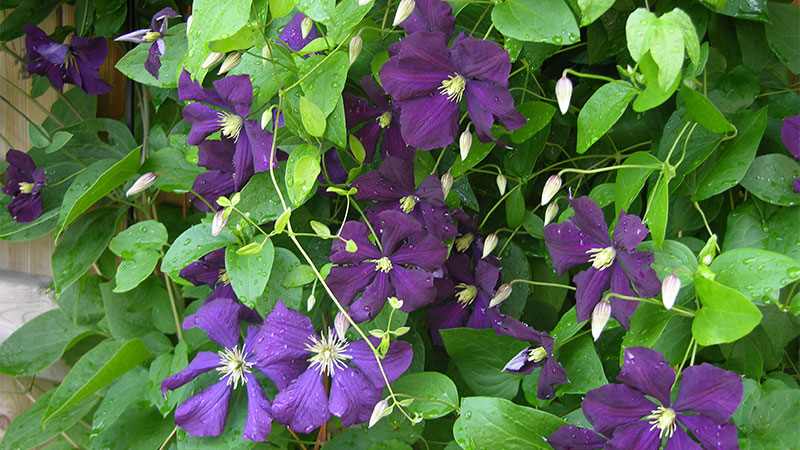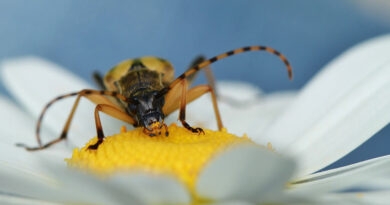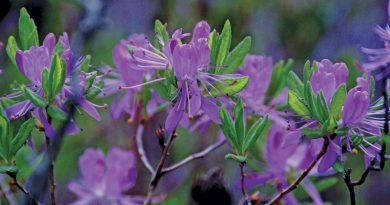Clematis beauty
There are gardeners who hesitate to plant clematis, fearing that, like hothouse flowers, they may require too much knowledge or care. Nothing could be further from the truth – they are actually quite robust and no one can deny their beauty.
They are also long lived! Clematis has been known to stay bloomingly healthy until age 80-plus!
Clematis, unlike most other vines, offers us an endless selection of stunning bloom from spring right through fall. We tend to think of the large flowered types or perhaps the shy little wild clematis that produce those stunning seed heads after blooming, but varieties come with large, showy, single flowers to stunning doubles, elfin caps, bells and even flowers with exaggerated centres that look like spiders clinging to petals. They can have as few as four delicate petals to many multiples of petals and the colours range from white to brilliant red, from true blue to bright purple. There are even some yellows in the mix and a few have bi-coloured petals.
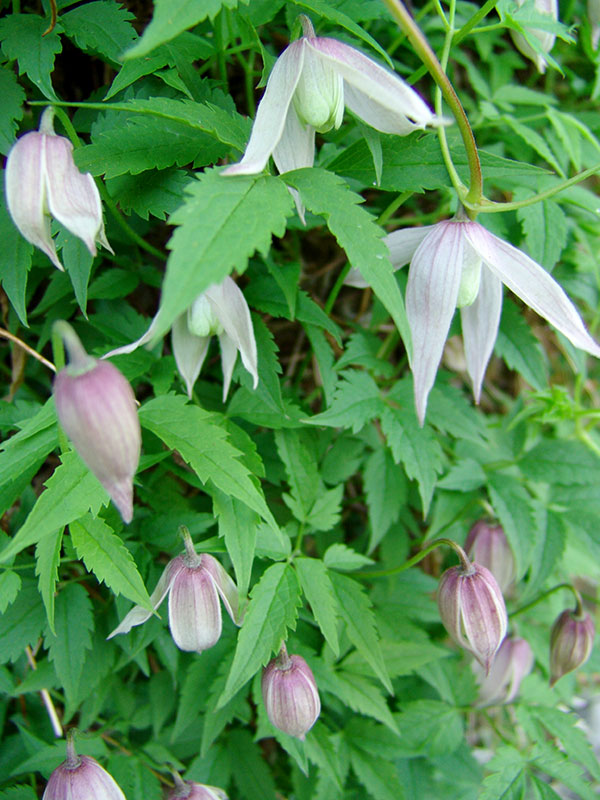
Design ideas
Often grown in miserly clumps on a vertical trellis, we too seldom take advantage of the design possibilities for these vines. Creative gardeners might grow them through the branches of a tree (C. montana is particularly good at this) or a shrub. Plant multiple vines in a row to allow them clamber over the length of a fence or wall. Interplant them with another vine or even a climbing rose.
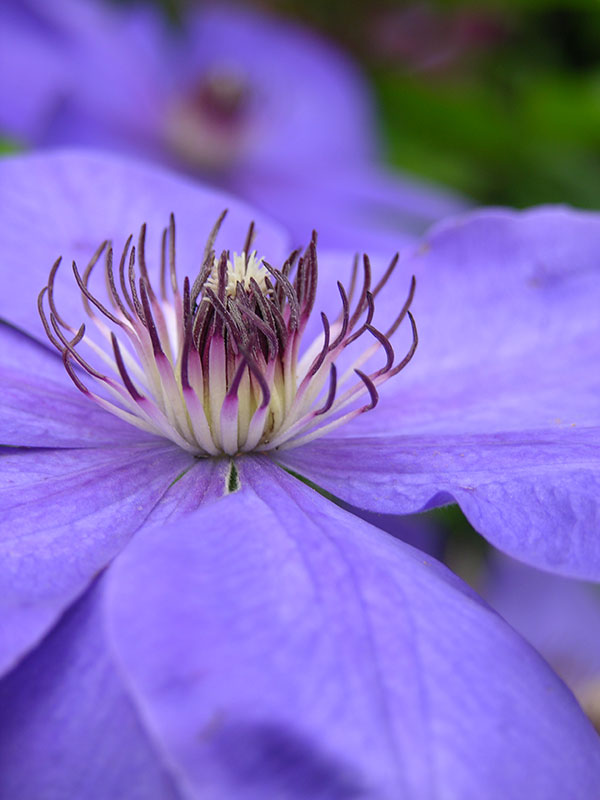
Planting and feeding
Contrary to what many believe, clematis is not fussy and is relatively easy to grow if you follow a couple of simple rules.
- Clematis needs its roots to be cool and moist. You can accomplish this by planting a shrub in front of the vine to keep the sun off the root zone, by mulching or even shading the area with a large rock.
- Plant clematis deeply, with at least six to eight inches of stem below grade. This will help keep the roots cool. For maximum safety, prepare a planting hole 18 inches deep and wide then fill the bottom with compost covered by soil and a handful of bone meal. The stem needs to be mature (not green) when buried to this depth.
- Clematis, for the most part, enjoys a good feeding in early spring just when the new shoots begin to grow. Use a general purpose, granular fertilizer and dig it into the soil in the root zone. You can mulch with compost or manure, being sure to stay away from the stems. Water in well. Continue feeding weekly with a water soluble fertilizer in the usual way until blooming.
Growing
Another wonderful thing about clematis is that many varieties are tolerant of part to full shade and, indeed, some need shade to maximize their colour potential. The sun-lovers generally require four to six hours of good light every day. Morning sunlight is ideal.
Pruning
For most clematis, pruning is unnecessary. In colder zones, the plant will freeze off anyway and re-grow from the ground up or from wherever it was protected under the snow.
Clematis is categorized into three groups according to blooming time and whether it blooms on old wood, new and old wood or just new wood.
- Group I blooms in early spring on old wood. Its buds were set the previous fall.
- Group II blooms in late spring early summer again on old wood. They are repeat bloomers and will produce more blossoms in late summer or fall on new wood.
- Group III is the hardiest for some of the colder climates. This type blooms on new wood produced in the same season and produces its flowers in summer or even fall. This type will completely die back over winter and can be pruned back to 12 inches without damage.
Over the past number of years many more varieties are being grown in the colder regions, but if you want to try the large-flowered, tender montanas (Zone 6) detach them from their support, lay vines on the ground and cover them with straw or some other warm winter protection to preserve the tender stems.
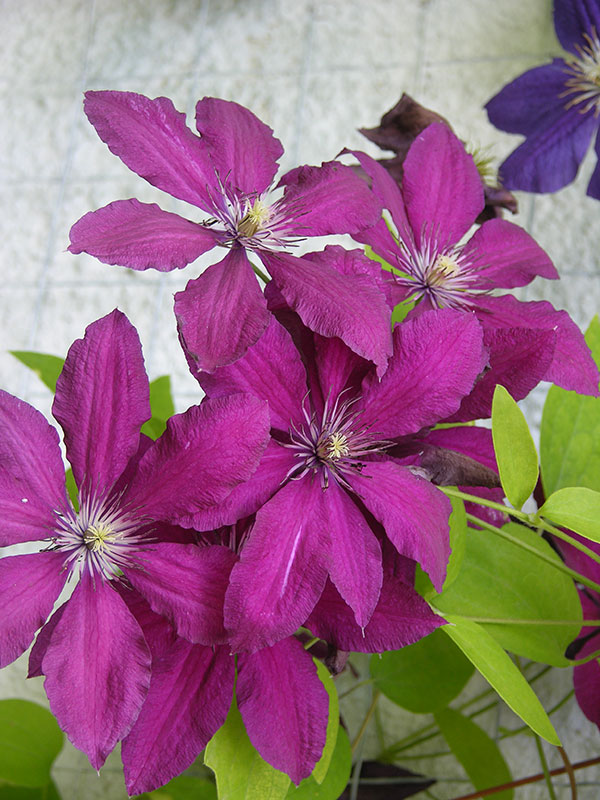
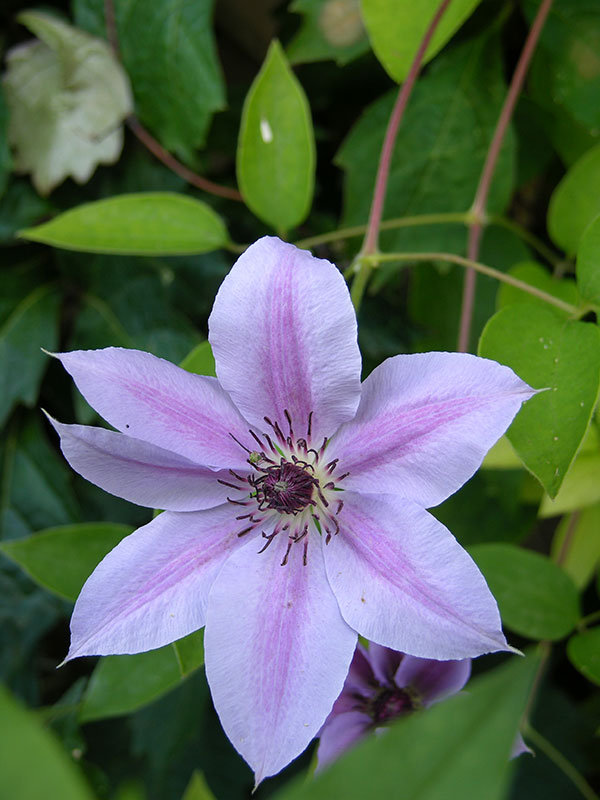
Container growing
Clematis can do well in containers under the right conditions.
Choose a large, deep container, larger than 18 inches wide and 18 inches deep, so you can deep-plant your clematis. The pot should be heavy enough to support a trellis and you will want to avoid metal or anything that heats up. Remember, cool roots are important and so is moisture. One-part coir to six parts soil is a good potting medium to keep the moisture in, but clematis also require good drainage, so don’t overdo the coir and make sure you have a nice layer of stone on the bottom or feet on the container to keep the pot out of the water that drains through.
In the coldest climates, place the container under some evergreens or wherever a heavy snow collects and thaws latest for additional insulation.
What bugs clematis
Clematis is a plant blessed with few problems, which is another reason to love it. Occasionally, it will be attacked by mildew and there is a condition called clematis wilt that sometimes fells stems of young plants, but all you do is cut off the affected stem.
Other than that, slugs and earwigs are their insect enemies and that’s about it.

